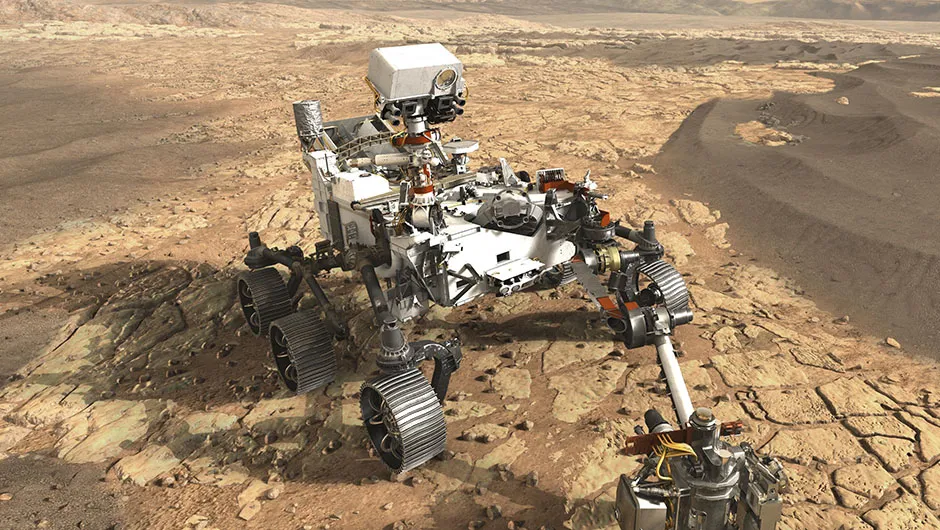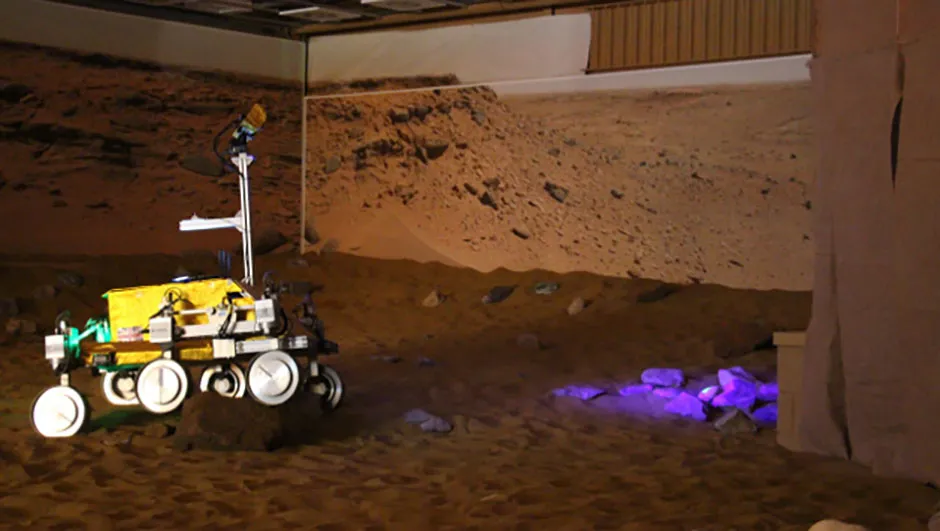ESA and NASA are now considering building a 'Moon Village' at the lunar south pole, and Elon Musk's Space X company has plans for a "BFR" 100-seater interplanetary space-liner as early as 2024.
To make these projects viable, most believe that local sources for fuel, air, food and power supplies will be needed.
The possibilities of 'living off the land' by applying In Situ Resource Utilisation (ISRU) approaches for exploration and colonisation are now emerging.
Why ISRU?
Before US President Donald Trump's most recent announcement of a 'Space Force', in 2017 he gave instructions for 'Space Directive 1', the US's return to the Moon before going on to Mars.
To support this, NASA's 'Next STEP-2' and ESA's new initiatives are taking 'ISRU' possibilities seriously.
The University of Manchester's Dr. Katherine Joy explains:
"There is a growing need to understand the budgets of different resources on the Moon, asteroids and Mars, and to develop technology to extract those resources in an efficient manner."
A launch to low earth orbit via the Atlas V booster costs $20,000/kg. Space X's Falcon Heavy rocket will achieve $1,700/kg, but onward flight will be more costly.
It seems clear that locally sourced methane and oxygen fuel on Mars and water for hydrogen and oxygen from lunar mining is needed.

Planned initiatives
Two forthcoming robotic space missions, Russia/ESA's Luna 27 lander and NASA's Mars 2020 rover, will soon be testing emerging ISRU possibilities.
Luna 27 will focus on the possibility of lunar ice at the Aitken Basin, ESA contributing the PROSPECT drill system to penetrate 2m down.
The Mars 2020 rover research includes the MOXIE experiment, a test unit designed to create breathable O2 from the CO2 and possibly oxidiser fuel from the Martian atmosphere.
In the future the 'Sabatier process' will be applied to extract O2 and rocket fuel for Martian bases and return flights to Earth.
The system involves the reaction of hydrogen with CO2 at 200-400ºC.
Methane fuel can then be created for supply ships, together with water and oxygen.
Of course, the available CO2 on Mars is very rarefied, with the atmospheric pressure being 100th that of Earth's.
Extensive solar PV or nuclear generators will be needed to make the system work.
The Mars Direct mission proposed by Dr. Robert Zubrin and the Mars Society from the 1990s relied on this approach and Space X's BFR rocket will require it.
Water
Extensive water ice is expected to be present in craters at the lunar poles.
In March 2010, the lunar probe Chandrayaan-1 discovered at least 40 shadowed craters at the lunar north pole containing an estimated 600 million tonnes of ice.
For Mars, it seems clear that using ISRU to unlock and exploit frozen water is vital.
Water locked up at the south polar cap is expected to be extensive - if melted it could entirely cover the planet's surface to 11 metres depth.

Local materials
To build bases, 'teleoperation' from orbit, either at Mars or the Moon, seems sensible.
UK astronaut Tim Peake tested this from orbit in 2015, operating the 'Bridget' Exomars test rover at Stevenage in the UK while orbiting our planet in the International Space Station.
Mixing regolith soil with a binding agent to establish a concrete-like hardened material for construction and insulation may be possible. Epoxy resin could be used to harden key structural load beams.
By 3D printing pulverised regolith material, it may one day be viable to use caves and lava tubes for settlement.
Food sources
The 2015 movie The Martian, adapted from the book by Andy Weir, describes the possibilities of using Mars soil to grow crops.
In fact, many researchers believe that ISRU-led plant production is indeed possible.
Macronutrients like O2, carbon, hydrogen, nitrogen and potassium are present in lunar and Martian soil.
Successful experiments occurred in the Netherlands at Wageningen University in 2014 to establish the viability of using local soil for both the Moon and Mars with greenhouse crop growth.
Ownership and conservation
Under the United Nations' 1967 Outer Space Treaty, nations cannot acquire land on celestial bodies.
However, it is generally accepted that lunar villages and Mars bases are unlikely to be prohibited by current international law.
The USA's Space Act of 2015 attempts to encourage the commercial use of materials beyond Earth and soon Belgium will allow companies planning exploitation of space to be registered from the nation.
Another issue to solve may well be the need to carefully plan which areas of both the Moon and Mars can be quarried, allowing for conservation areas and 'interplanetary parks'.
Future prospects
As bases and colonies become more extensive and research and development is more sophisticated, so ISRU will come into its own.
Perhaps one day, lunar and Martian entrepreneurs will copy the commercial style of Earth's settler pioneers and begin exporting home-grown materials back to the Earth.
